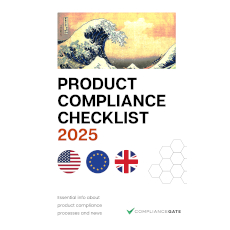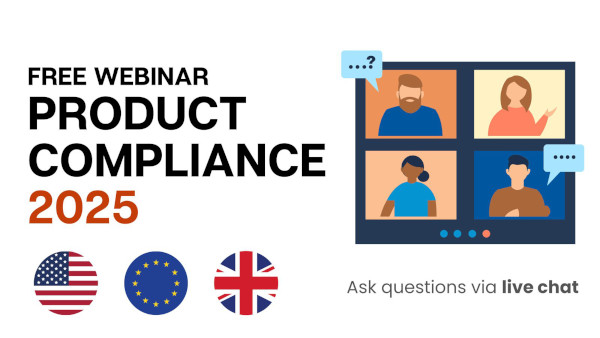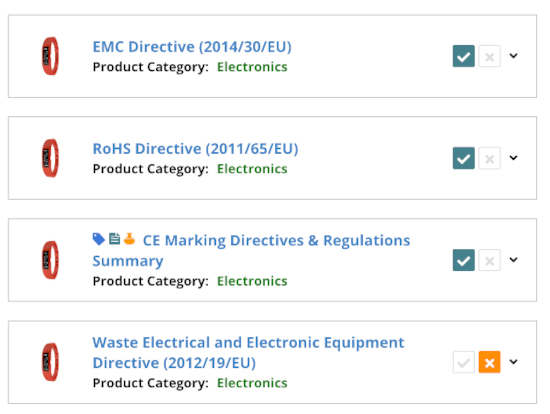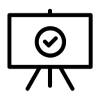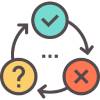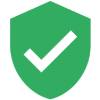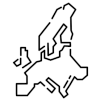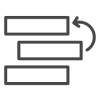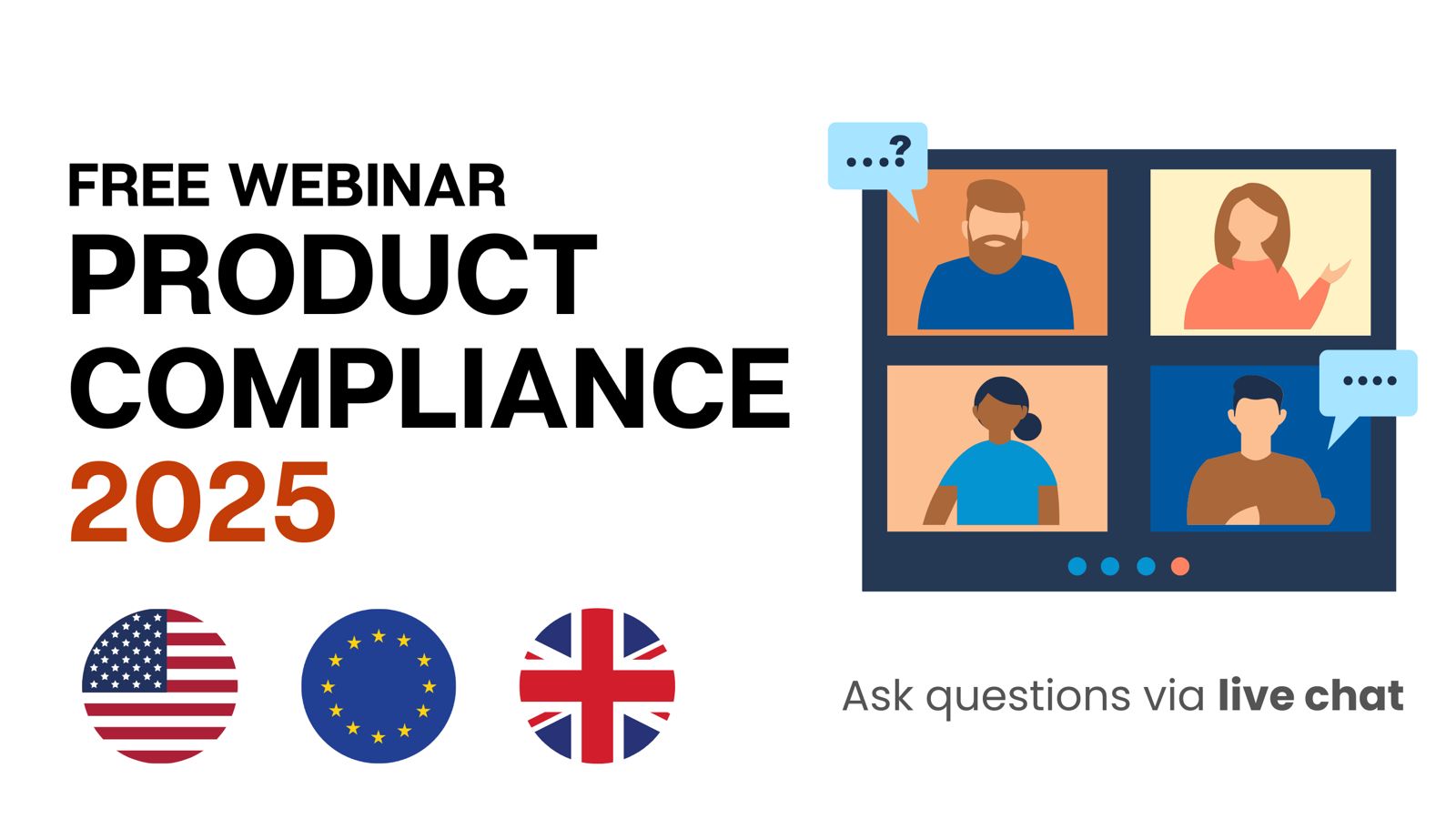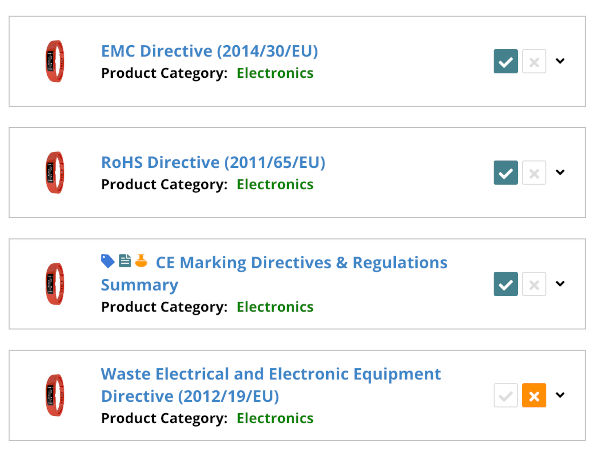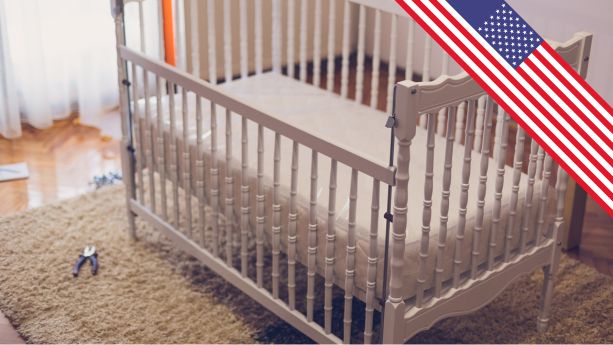
Cribs imported or manufactured in the United States are subject to various regulations, safety standards, substance restrictions, and testing requirements. In practice, this means that cribs sold in the US must be designed in a way that prevents falls and strangulation, while also not containing lead and other restricted substances.
In this guide, we explain how regulations such as the Consumer Product Safety Improvement Act (CPSIA), as well as standards such as ASTM F2710, are relevant to cribs in the United States.
Content Overview

FREE CONSULTATION CALL (US, EU & UK)
- Request a free 30-minute call with Ivan Malloci to learn how we can help you with:
- Find product requirements
- Certification and labeling
- Lab testing
Consumer Product Safety Improvement Act (CPSIA)
The Consumer Product Safety Improvement Act (CPSIA) sets requirements for children’s products, including cribs and related products, such as crib mattresses and toy attachments.
The CPSIA generally requires companies to:
a. Ensure that their product complies with substance restrictions (e.g. for phthalates)
b. Ensure product compliance with relevant safety standards (e.g. ASTM F1169)
c. Have their product undergo testing performed by a CPSC-accepted lab
d. Draft a Children’s Product Certificate
e. Affix the tracking label to the product and packaging
f. Comply with the labeling and registration card requirements for durable infant or toddler products
Full-size baby cribs
The CPSC defines a full-size crib as a bed that an infant can sleep on in locations such as the home, a childcare facility, or hotels, and has interior dimensions measuring 71 ±1.6 cm in width and 133 ±1.6 cm in length.
16 CFR Part 1219 – Safety Standard for Full-Size Baby Cribs covers full-size baby cribs and incorporates by reference ASTM F1169 – Standard Consumer Safety Specification for Full-Size Baby Cribs, thereby mandating compliance with its requirements.
ASTM F1169 sets performance, labeling, instruction, and testing requirements for full-size baby cribs. For example, such products should undergo the following testing:
- Mattress support system vertical impact
- Drop and stationary side (static and cyclic)
- Crib side spindle/slat torque
- Drop and folding side latch
- Plastic teething rail
Non-full-size baby cribs
A non-full-size crib can either be smaller or larger than a regular full-size crib. The exact dimensions are provided in 16 CFR Part 1220 – Safety Standard for Non-Full-Size Baby Cribs:
Has an interior length dimension either greater than 139.7 cm (55 in.) or smaller than 126.3 cm (49 3⁄4 in.), or, an interior width dimension either greater than 77.7 cm (30 5⁄8 in.) or smaller than 64.3 cm (25 3⁄8 in.), or both;
Here are some examples of non-full-size baby cribs taken from the CPSC Guidance page:
- Portable cribs
- Crib pens
- Specialty cribs
- Undersize cribs
- Oversize cribs
16 CFR Part 1220 – Safety Standard for Non-Full-Size Baby Cribs, which covers non-full-size baby cribs, incorporates by reference ASTM F406 – Standard Consumer Safety Specification for Non-Full-Size Baby Cribs/Play Yards.
ASTM F406 sets testing and performance requirements for non-full-size baby cribs. It also sets labels and instructional requirements.
Requirements for crib mattresses
16 CFR Part 1241 – Safety Standard for Crib Mattresses covers crib mattresses and incorporates by reference ASTM F2933. It also sets additional requirements, with respect to the ASTM standard, concerning:
- Test methods and procedures
- Labeling
- Instructions
- Warnings
ASTM F2933 sets requirements for the design, testing, and labeling of:
- Mattresses for full-size cribs
- Mattresses for non-full-size cribs
- After-market mattresses for non-full-size cribs
Requirements for toys intended to be attached to a crib
The CPSC website states that section 4.26 of the mandatory ASTM F963 standard for children’s toys specifically covers toys meant to be attached to cribs. It also notes that toys should not pose risks both before and after abuse testing, and states that the standard provides labeling requirements for crib mobiles.
Children’s Product Certificate
The CPSIA requires you to create a Children’s Product Certificate for your crib. This self-issued document certifies that your product complies with the relevant safety requirements.
Tracking label
You must affix a tracking label on your product and packaging. The label should contain the following information:
- Company name
- Date and place of production
- Batch, run number, or other information that identifies the product
Requirements for durable infant or toddler products
The CPSC considers cribs and crib mattresses to be durable infant or toddler products, which are products that are meant for use by children younger than 5 years.
16 CFR Part 1130 – Requirements for Consumer Registration of Durable Infant or Toddler Products mandates that covered products should:
a. Bear a label that contains the manufacturer’s contact information (address and phone number in the United States), model name and number, on top of the tracking label information
b. Be accompanied by a product registration form
Ban on crib bumpers
16 CFR Part 1309 – Ban of Crib Bumpers sets a ban on crib bumpers, as mandated by the Safe Sleep for Babies Act. These products are defined as products having all the following characteristics:
a. Include any materials that cover crib sides to prevent injury or body parts from getting stuck
b. Include a padded crib bumper, a vinyl bumper guard, or vertical crib slat cover, and
c. Do not include a non-padded mesh crib liner.
According to the Crib Bumper FAQs, the CPSC has not set testing or certification requirements for crib bumpers so far but could do so in future.
ASTM F2710 – Standard Consumer Safety Performance Specification for Commercial Cribs
We could only find one standard – ASTM F2710 – that explicitly covers cribs but is not incorporated by reference into CPSIA. While ASTM standards that are not incorporated by reference in theory are not mandatory, in practice you must still ensure that your product is safe, and thus comply with the requirements of relevant safety standards.
Commercial cribs are cribs that are used in commercial environments, such as daycare centers and hotels. Thus, if you sell these products, you should comply with the requirements of this standard, on top of other relevant requirements.
ASTM F2710 sets performance and marking requirements, as well as the following tests to determine conformity:
- Crib static load test
- Threshold test
- Drop-side dynamic test
The standard covers full-size cribs and non-full-size cribs and explicitly excludes bassinets and cradles.
Uniform Law Label
Many states, such as California, Massachusetts, and Virginia, set Uniform Law Label requirements for products such as mattresses and other products with filling material. This could include, for instance, crib mattresses.
In this guide, we provide the example of California. Note, however, that requirements may be different in other states. According to the California Bureau of Household Goods and Services, mattresses in California are required to securely bear a Type No. 7 law label containing:
- The “UNDER PENALTY OF LAW” statement
- “ALL NEW MATERIAL” statement, with the types of filling material
- Finished size, indicated by width and length
- Net weight of filling material, stated in pounds and ounces
- “REGISTRY NO.”, and the corresponding registry number assigned
- “Certification is made” statement
The label may also contain an “other information” section at the bottom, which can provide, for instance, the manufacturer’s name, date of delivery, or country of origin information.
Lab Testing
While some regulations such as CPSIA mandate product testing against relevant standards or substance restrictions, other regulations may not explicitly require testing.
Regardless, you should still get your products tested to make sure they are safe to use. If your product passes relevant tests, you receive a test report that indicates your product’s compliance.
| Regulation | Lab testing |
| Consumer Product Safety Improvement Act (CPSIA) | The CPSIA sets safety requirements for children’s products, such as cribs. Such products should undergo tests to ensure product safety. Here are some examples of such tests:
|
| ASTM Standards | The tests you subject your cribs to would depend on the ASTM standard that is relevant for the product. For instance, cribs may need to undergo tests such as:
|
Crib testing companies
Here are some examples of companies that claim they can test cribs or crib mattresses against US requirements:
- Intertek
- QIMA
- SGS
- Bureau Veritas
- UL Solutions
Additional Requirements
Here we list some additional requirements that also apply to certain cribs.
| Regulation | Description |
| Lacey Act | The Lacey Act forbids the trade of illegally obtained plants and plant products, among other products. If your product is listed in the “Lacey Act Declaration Implementation Schedule”, you need to fill in a Lacey Act Declaration. Although we could not find any mention of cribs, we did find that the following products are covered:
Thus, it is possible that cribs are covered by the act. |
| 7 CFR Part 319 Subpart I – Logs, Lumber, and Other Wood Articles | 7 CFR Part 319 Subpart I regulates the importation of certain wooden articles, including certain types of furniture products, which may include cribs, to prevent infestation of plant pests. It requires covered products to have permits and undergo treatments (eg. fumigation). |
| 16 CFR Part 303 – Rules and Regulations Under the Textile Fiber Products Identification Act | This regulation may apply to products made of textiles. Note that we could not find cribs listed among the covered or exempted products. |
| California Proposition 65 | California Proposition 65 restricts the use of certain substances in consumer products. Cribs may contain restricted substances, such as:
|
| Country of origin | Products sold in the United States are required to bear a country of origin marking.
For instance, a crib that had its parts made in Vietnam but assembled in China would read “Assembled in China from components of Vietnam”. |
Recommended articles


